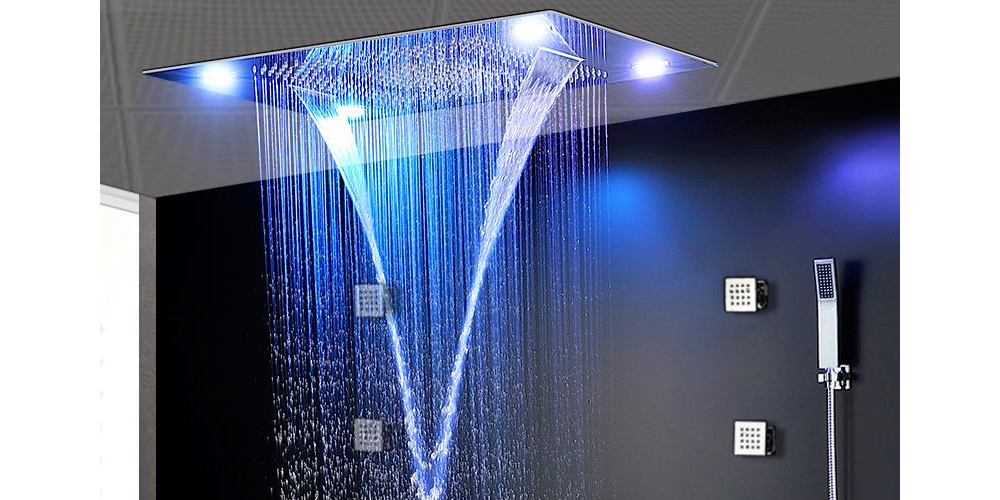If not for the fact that moving under the rain could cause extreme cold, a lot of us don’t mind. It feels like uncontrolled showers.
The design of the overhead shower heads was inspired by falling rain, as it gently releases water to your body. Bath time becomes lively and enjoyable.
Other names for overhead showers include rainfall shower, downpour shower head, etc. However, a lot of people find it difficult to install overhead hand showers.
Before we look at how to install overhead shower heads, let’s look at what overhead hand showers are in general
Overview
As already mentioned, the overhead shower heads come in different names- rainfall shower, downpour showers, falling rain shower, etc.
This shower head releases water like rainfall. You would mostly find these showers of two types- ceiling and wall-mounted shower heads. They both rain down water in a gentle manner.
However, an overhead hand shower is designed to be a merger. Unlike conventional shower heads, it aims to give you that gentle rainfall shower effect, but it also allows you to be as versatile as you want.
You can clean hidden corners that normal shower heads wouldn’t permit. You can wash kids and pets’ bodies, wash corners of showers, and fill containers with water. It is not stressful in any way.
These overhead shower heads are manufactured with either chrome or metal, although these days there are some shower heads made from plastic to suit low budgets. But that shouldn’t be the case. Buying plastic shower heads will not yield high returns in the long run.
There are lots of fine metal overhead shower heads that are both cost-effective and aesthetically appealing.
Here are ways you can install overhead shower heads
a. Remove the old shower head
It’s very possible to remove it by hand, but if the shower head has been there for a long time, you may need an adjustable wrench.
If it proves difficult, use the wrench to rotate the shower head in a counterclockwise direction till it unscrews.
b. Clean the shower arm and maintain it
Once the head has been removed, the next thing to do is to check the shower arm threads for debris and other unwanted things.
If you find, the best cloth to use is the microfiber cloth because it eliminates remnant Teflon tape with ease. Next up, check for leaking and corrosion so you don’t experience problems later on. If any of the threads are damaged, it’s time to get a new one.
c. Use the Teflon tape
Since you removed the old ones, it’s time to replace them. The purpose of these tapes is to prevent leaking after installation.
d. Attach the showerhead now
You will now use the rubber shower head to seal the showerhead and ensure that it’s watertight. Ensure you place it correctly before sealing the showerhead
e. Make sure the showerhead is tight
You may need the adjustable wrench on this one. Use the wrench to tighten the shower properly.


